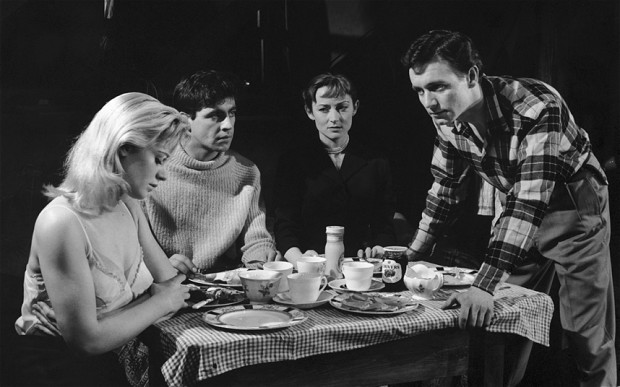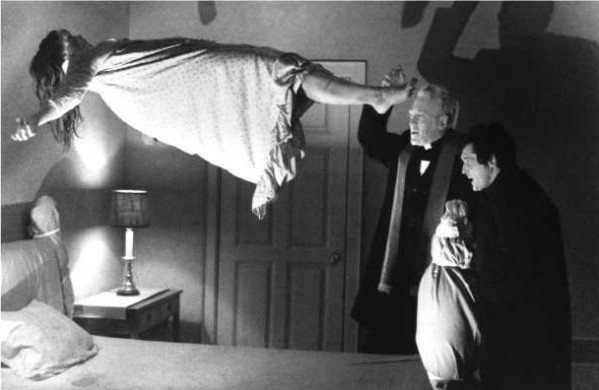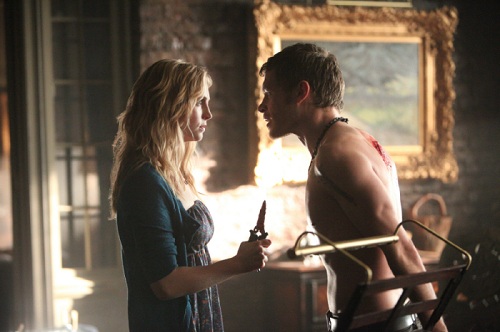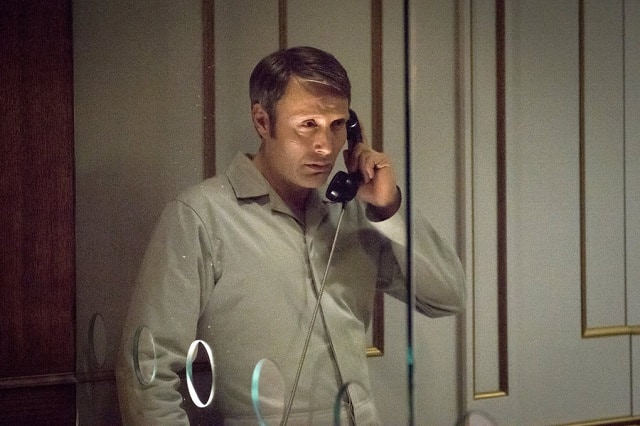In August 1955, George Devine, director of London’s Royal Court Theatre, ventured to meet a promising writer, living on a Thames houseboat. “I had to borrow a dinghy… wade out to it and row myself to my new playwright,” he recalled. Thus began a partnership between Devine, who sought to rescue the English stage from stale commercialism, and the 26 year old tyro, John Osborne. Together, they’d revolutionize modern theater.
Born in London but raised in Stoneleigh, Surrey, Osborne lost his father at age 12, resented his low-born mother and was expelled from school for striking a headmaster. While acting for Anthony Creighton’s repertory company, his mercurial temper and violent language appeared. In 1951 he wed actress Pamela Lane, only to divorce six years later. Osborne soon immortalized their marriage: their cramped apartment, with invasive friends and intruding in-laws, John and Pamela’s pet names and verbal abuse, savagery with an iron.
Osborne disliked acting, especially its cloistered, repertory form. “I’ve had a raw deal from the start,” he snarled: “The bastards just don’t like me.” So he started writing plays. The first, The Devil Inside Me, received little notice; the second, Personal Enemy, irked censors by depicting homosexuality. Another, Epitaph for George Dillon, remained unpublished. He wrote his next play in 17 days, the play which inspired Divine’s visit: Look Back in Anger.
Devine matched Osborne with director Tony Richardson. Son of a Yorkshire chemist, Richardson grew up resenting “that virus of the British – class,” which later drove him to America. Richardson co-founded the Free Cinema movement with directors Lindsay Anderson (This Sporting Life) and Karel Reisz (Saturday Night and Sunday Morning). “No film can be too personal,” they proclaimed. “Size is irrelevant. Perfection is not an aim.” But Richardson made his first splash onstage, with a show he called “the best play written since the war.”

On May 8th, 1956, Look Back in Anger premiered.
“The First Night audience… seemed transfixed by a tone of voice that was quite alien to them,” Osborne recalled. Viewers trembled as Osborne’s hero, Jimmy Porter, raged against middle-class pretentiousness, English complacency, and his own failures. Unable to change society, Jimmy savaged those nearest him: his long-suffering friend Cliff, actress Helena Charles, and especially his high-born wife Alison, who bears insults, iron-burns and infidelity with improbable impassivity.
Britons had never seen a hero like Jimmy. What kind of hero told his wife: “If you could have a child, and it would die… I wonder if you might even become a recognizable human being yourself”? Maybe among America’s more radical playwrights – Eugene O’Neill? Tennessee Williams? – Jimmy would fit. Not in England. (Then again, Americans weren’t less shocked. During Anger‘s Broadway run, a woman rushed onstage and slapped Kenneth Haigh, playing Jimmy.)
Noel Coward stormed out, decrying “this trend of dreariness for dreariness sake.” Laurence Olivier declared Anger “a travesty on England.” The Evening Standard called it “self-pitying snivel.” (“You didn’t expect them to like it, did you?” Richardson consoled Osborne.) But Kenneth Tynan, London’s leading critic, raved: “I doubt if I could love anyone who did not wish to see Look Back in Anger.” More importantly, a generation of young Britons found Jimmy’s raw, unfocused anger expressing their own misgivings.
Anger embodied ’50s Britain’s economic angst, post-imperial disillusionment, and class tensions, the way films like Easy Rider and The Graduate captured ’60s America. Osborne replaced Coward’s wit and Rattigan’s craftsmanship with violent verbiage and pointed commentary. Alan Sillitoe, author of Saturday Night and Sunday Morning, claimed Osborne “didn’t contribute to British theatre, he set off a landmine and blew most of it up.” He inspired writers from Sillitoe, Shelagh Delaney and Harold Pinter, to Americans Edward Albee and Neil LaBute.
The old guard couldn’t understand Anger‘s appeal. Soon after opening night, Devine confronted Terence Rattigan, who’d publicly dismissed Anger as un-commercial. During a heated argument, Devine promised that “it’s going to make the Royal Court possible.”
“Then I know nothing about plays,” Rattigan scoffed.
Devine had enough. “You know everything about plays,” he told the author of Separate Tables. “But you don’t know a f***ing thing about Look Back in Anger!”
Anger‘s success – it ran for 151 shows in London, then transferred to New York – made Osborne a celebrity, the archetypical “Angry Young Man.” He married Anger‘s leading lady, Mary Ure, then wrote a successful follow-up, The Entertainer (of which, more later). But when Osborne tried selling Anger to film studios, none accepted. Undaunted, he, Richardson and future James Bond producer Harry Saltzman formed Woodfall Productions in 1958. Osborne hoped Woodfall would trigger an “assault on the suburban vapidity of British film-making.”
Thus Richardson’s Free Cinema mutated into the British New Wave. Between 1958 and 1963, English studios produced “kitchen sink” films about working class, anti-establishment heroes: Room at the Top, The Loneliness of the Long-Distance Runner, This Sporting Life. They’re aesthetically interchangeable: run-down flats and endless slag heaps, bereft of action, humor, or eroticism. But they infused British cinema with new emotion and young stars: Alan Bates, Julie Christie, Tom Courtenay, Albert Finney, Richard Harris, Rita Tushingham.
Anger, on the other hand, starred Richard Burton. Considering Jimmy Porter a career-best part, Burton ignored his agent and accepted a £30,000 salary. Claire Bloom appeared as Helena instead of Helena Hughes, while George Raymond replaced Alan Bates as Cliff. Of the original cast, only Mary Ure remained as Alison. George Devine cameos as a doctor, discouraging Alison from an abortion.
Osborne proved reluctant to alter Anger for the screen. So Richardson tapped Nigel Kneale, who’d written The Quatermass Xperiment for the BBC, to rework it. Now Jimmy Porter plays his trumpet at a jazz club, mocks war movies at the cinema and crashes Helena’s audition. Working at a market, he encounters Hurst (Donald Pleasance), a crude inspector who unfairly closes an Indian vendor (S.P. Kapoor). We meet not only Alison’s dad Colonel Redfern (Glen Byam Shaw), but Ma Tanner (Edith Evans), Jimmy’s lowborn Mother. Much of Osborne’s dialogue is pared, rewritten and created from scratch.

These alterations have mixed effect. It’s understandable that Richardson and Kneale want to open up Anger: its apartment setting would lead to a stuffy film. They also shade the drama: Jimmy’s attitude becomes more understandable after seeing his lousy life. Alison’s disdain for Ma Tanner gives Jimmy’s class resentment a glimmer of justification. Richardson approaches Anger‘s characters with a sociologist’s eye, seeking to understand rather than project.
But giving Anger‘s angst an escape valve softens the drama. With so many extenuating circumstances, Jimmy becomes a disordered miscreant rather than a force of nature. The licensing subplot provides an easy villain: Hurst isn’t only officious and cheap, but racist. Nor does Richardson improve the female characters: Alison is pathetically passive, even in her fleeting defiance; Helena, a strong woman cowed by Jimmy’s raging libido. Even Ma Tanner’s more symbol than character.
Richardson’s dynamic direction helps Anger work cinematically. The movie opens with a montage of Jimmy performing jazz, wandering through the city and returning home: an excellent blend of music, brooding shadows and disordered dancing. There’s other clever montage work, like shock cutting between Jimmy’s profanity and screaming children. Cinematographer Oswald Morris probes Jimmy’s smoky flat, grimy Midlands streets and, mixing long takes with deep-focus photography.
Inevitably, Richard Burton brings star baggage to Jimmy, though he’s more convincingly working-class than, say, Laurence Harvey in Room at the Top. Burton provides anguished passion and raw sexuality, a Midlands Stanley Kowalski whose cruelty seems both calculated and flailing. It’s a technically accomplished, yet flawed performance: Burton’s more compelling as a star stretching his talent through meaty monologues, than a unique character.
Did Anger impact British cinema? Debatable. Room at the Top preceded it, and far more accomplished works followed. Richardson directed other kitchen sink films, to mixed effect. A Taste of Honey‘s (1961) dreariness hasn’t aged well, despite Rita Tushingham’s charm. The Loneliness of the Long-Distance Runner (1962) is even more extreme, yet succeeds through Tom Courtenay’s star-making performance.
Anger earned four BAFTA nominations and respectable reviews. Yet it flopped at the box office, barely recouping its meager £250,000 budget. Undaunted, Richardson and Osborne turned to their second stage hit – this time, with their original star.
Sources include John Heilpern’s John Osborne: A Patriot for Us (2006); Ruth Little and Emily McLaughlin’s The Royal Court Theatre Inside and Out (2007); and Tony Richardson’s memoir, The Long-Distance Runner (1993).








